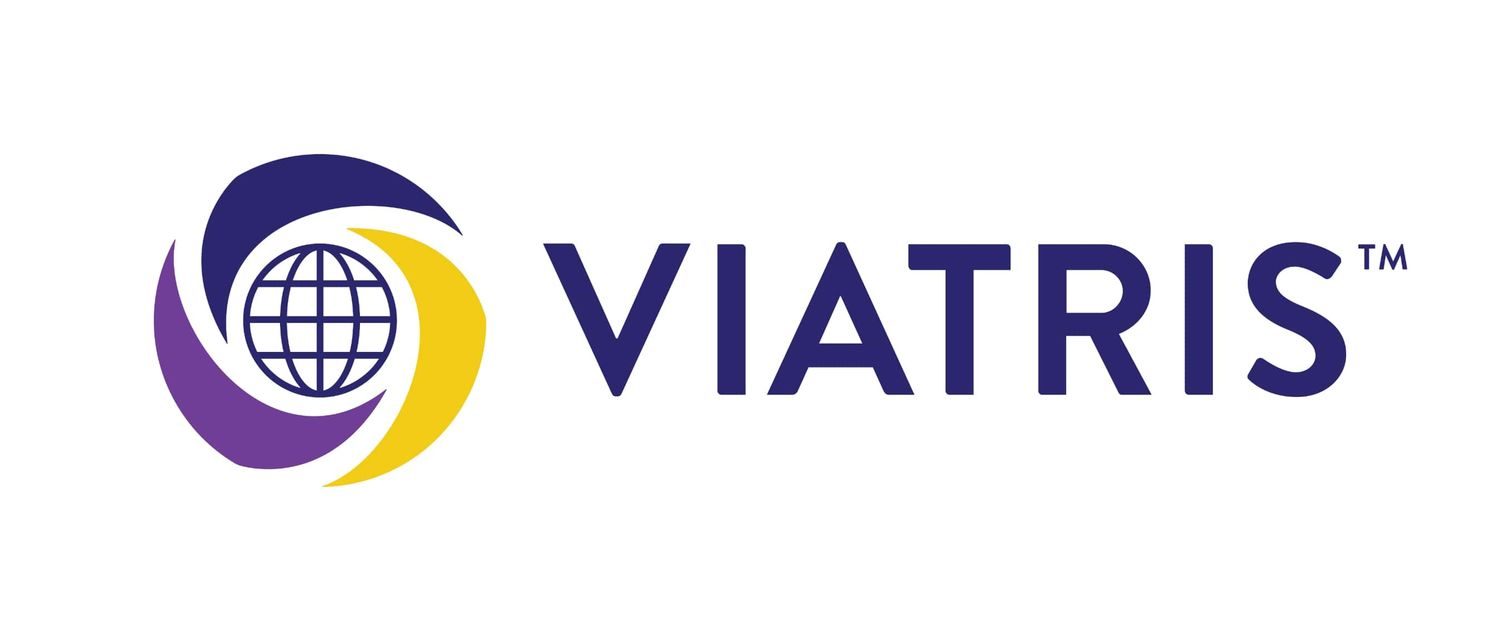Request Demo
Last update 08 May 2025
Pulmonary Tuberculosis
Last update 08 May 2025
Basic Info
Synonyms Consumption, Pulmonary, Consumptions, Pulmonary, Drug-sensitive pulmonary tuberculosis + [73] |
Introduction MYCOBACTERIUM infections of the lung. |
Related
113
Drugs associated with Pulmonary TuberculosisTarget- |
Mechanism- |
Active Org. |
Originator Org. |
Active Indication |
Inactive Indication- |
Drug Highest PhaseApproved |
First Approval Ctry. / Loc. Japan |
First Approval Date23 Mar 2023 |
Target- |
Mechanism tuberculosis skin test |
Active Org. |
Originator Org. |
Active Indication |
Inactive Indication |
Drug Highest PhaseApproved |
First Approval Ctry. / Loc. China |
First Approval Date01 Apr 2020 |
Target |
Mechanism CYP2C19 inhibitors [+4] |
Active Org. |
Originator Org. |
Active Indication |
Inactive Indication |
Drug Highest PhaseApproved |
First Approval Ctry. / Loc. United States |
First Approval Date14 Aug 2019 |
790
Clinical Trials associated with Pulmonary TuberculosisNCT06441006
Program for Rifampicin-Resistant Disease With Stratified Medicine for Tuberculosis (PRISM-TB)
PRISM-TB is an international, multicenter, open-label, randomized, controlled, pragmatic, stratified medicine, treatment shortening, noninferiority Phase 3 clinical trial for fluoroquinolone-susceptible multidrug-resistant/rifampin-resistant pulmonary tuberculosis (FQ-S MDR/RR-TB).
The trial objective is to evaluate whether stratified medicine treatment strategies for FQ-S MDR/RR-TB, defined by a pre-specified risk stratification algorithm, have noninferior efficacy to a one-size-fits-all control regimen (the local standard-of-care [SOC] regimen consistent with preferred regimen(s) in international guidelines), as measured by TB-related unfavorable outcomes at Week 73.
The trial objective is to evaluate whether stratified medicine treatment strategies for FQ-S MDR/RR-TB, defined by a pre-specified risk stratification algorithm, have noninferior efficacy to a one-size-fits-all control regimen (the local standard-of-care [SOC] regimen consistent with preferred regimen(s) in international guidelines), as measured by TB-related unfavorable outcomes at Week 73.
Start Date01 Oct 2026 |
Sponsor / Collaborator |
NCT06568484
Bedaquiline Roll-out Evidence in Contacts and People Living With HIV to Prevent TB (BREACH-TB)
A Phase III, open-label, multicenter, non-inferiority trial, to compare the efficacy and safety of 4 weeks of bedaquiline (BDQ) versus a World Health Organization (WHO) -recommended regimen for preventing confirmed or probable tuberculosis disease (TBD) during 96 weeks of follow-up among people living with HIV (PLHIV) and high-risk Close Contacts (CC) of adults with Drug Susceptible (DS) or Rifampin Resistant (RR) TB.
Start Date01 Dec 2025 |
Sponsor / Collaborator |
NCT06585358
DoseTB-individualised Dosing by Model-informed Precision Dosing for Pulmonary Tuberculosis
The goal of this observational study is to investigate whether model-informed precision dosing (MIPD), as a clinical support for early individualised dosing in addition to the national TB care program, can optimise the drug exposure of TB drugs during TB treatment.
Main research questions:
In adult patients with drug-susceptible pulmonary tuberculosis, can current dose recommendations and information received from MIPD help clinicians in a timely manner to optimise the drug exposure of TB drugs in the early treatment phase, i.e., the time from PK sampling to dose adjustment (keep or adjust dose)?
Specific aims
I. To perform a process evaluation of early MIPD for rifampicin, isoniazid, pyrazinamide and ethambutol during active TB treatment.
II. To study the target attainment of first-line TB drugs with MIPD.
III. To evaluate model precision of predicted versus detected drug concentrations.
Drug concentrations will be measured in study participants during TB treatment, and drug exposure and the optimal dose will be predicted by MIPD using pharmacokinetic population models.
Main research questions:
In adult patients with drug-susceptible pulmonary tuberculosis, can current dose recommendations and information received from MIPD help clinicians in a timely manner to optimise the drug exposure of TB drugs in the early treatment phase, i.e., the time from PK sampling to dose adjustment (keep or adjust dose)?
Specific aims
I. To perform a process evaluation of early MIPD for rifampicin, isoniazid, pyrazinamide and ethambutol during active TB treatment.
II. To study the target attainment of first-line TB drugs with MIPD.
III. To evaluate model precision of predicted versus detected drug concentrations.
Drug concentrations will be measured in study participants during TB treatment, and drug exposure and the optimal dose will be predicted by MIPD using pharmacokinetic population models.
Start Date01 Oct 2025 |
Sponsor / Collaborator |
100 Clinical Results associated with Pulmonary Tuberculosis
Login to view more data
100 Translational Medicine associated with Pulmonary Tuberculosis
Login to view more data
0 Patents (Medical) associated with Pulmonary Tuberculosis
Login to view more data
45,056
Literatures (Medical) associated with Pulmonary Tuberculosis31 Dec 2025·Pulmonology
Vaccination in post-tuberculosis lung disease management: A review of the evidence
Review
Author: Rommasi, F. ; Tajabadi, Z. ; Silva, D.R. ; Solovic, I. ; Rabahi, M.F. ; Nasiri, M.J. ; Centis, R. ; van den Boom, M. ; Khelghati, F. ; Sotgiu, G. ; Sarmastzadeh, T. ; Zahmatkesh, M.M. ; D'Ambrosio, L. ; Tadolini, M. ; Marconi, L. ; Migliori, G.B. ; de Queiroz Mello, F.C. ; Pontali, E. ; Galvão, T. ; Bombarda, S. ; Tiberi, S. ; Dalcolmo, M.P.
01 Dec 2025·Lung
Diagnostic Accuracy of Breath Tests to Detect Pulmonary Tuberculosis: A Systematic Review
Review
Author: See, Kay Choong ; Chew, Natalie ; Yun, Sean
01 Dec 2025·Journal of Hematopathology
Intraocular bone marrow formation in end-stage phthisis bulbi
Article
Author: Matson, Daniel ; Bacig, Cole ; Schulz, Maria
55
News (Medical) associated with Pulmonary Tuberculosis01 Apr 2025
KIGALI, Rwanda and WALTHAM, Mass., April 1, 2025 /PRNewswire/ -- AKAGERA Medicines, Inc. is a biotech company focused on the discovery and development of novel lipid nanoparticle formulations of antibacterial drugs and mRNA vaccines to treat tuberculosis, avian flu, RSV and other infectious diseases. The company announced today that it completed the first cohort in its first-in-human phase 1 SAD/MAD study of AKG-100, which is an oxazolidinone class of antibiotic for treatment of pulmonary tuberculosis (TB).
Continue Reading
AKAGERA Medicines is substantially supported by the Coalition for Epidemic Preparedness Innovations (CEPI) in Norway, the Bill and Melinda Gates Foundation, the National Institute of Health (NIH) in Washington, and the European Investment Bank (EIB) in Luxembourg.
Despite being preventable and treatable, TB is the leading infectious disease killer and a major global health threat.
Post this
The study consists of single ascending dosing (SAD) and multiple ascending dosing (MAD) to establish the safety and pharmacokinetics of AKG-100 alone in single doses in healthy volunteers and pulmonary TB patients as well as in multiple doses in pulmonary TB patients. This study is being conducted at TASK clinical research site in Cape Town, South Africa. Approximately 100 participants will be enrolled in the study.
"The completion of the first cohort in this study is an important milestone as we progress a novel long-acting injectable and targeted treatment option for patients with pulmonary TB," said
Dr. Daryl Drummond, Chief Science Officer of AKAGERA Medicines. He added, "AKG-100 demonstrated promising preclinical data, and we believe that the addition of AKG-100 to drug-resistant TB treatment regimens will improve anti-TB activity and provide a favorable safety profile." Less frequent IV dosing is also expected to provide flexibility and improve treatment compliance in the poorest countries in the world.
"TB is the greatest killer in human history. One out of seven people who ever lived has died from it. Nearly, two million of the poorest people in Russia, India, Africa, and China die from it every year and 400,000 of them are children," said
Michael Fairbanks, Executive Chairman of AKAGERA Medicines.
About AKG-100:
AKG-100 is a highly stabilized pegylated liposomal formulation of a novel oxazolidinone antibiotic. "Liposome-encapsulated drugs are a promising area of drug delivery research that involves the use of microscopic lipid-based vesicles to transport drugs to target cells or tissues," said,
Dr. Sachin Marulkar, the Chief Medical Officer of AKAGERA Medicines. He added, "The AKG-100 liposome encapsulated formulation enhances drug efficacy by increasing drug stability, improving drug solubility, and reducing toxicity." AKG-100 also increases drug uptake and retention by target cells and leads to higher drug concentrations at the site of action. Liposomes protect drugs from degradation, clearance, or immune recognition, and allow for sustained drug release and longer circulation times.
About AKAGERA Medicines:
AKAGERA Medicines develops novel liposomal formulations of drugs to treat tuberculosis, and mRNA vaccines to prevent infection by RSV, influenza, avian flu, Lassa Fever, tuberculosis, and HIV.
The clinical stage company was founded in 2018 in Kigali, Rwanda. It is registered as a Delaware corporation and has laboratories in Boston and San Francisco. It is well-funded, majority-owned by the people of Rwanda through the Rwanda Social Security Board (RSSB). Akagera Medicines registered a 100%-owned subsidiary in Kigali in 2022 to do manufacturing and clinical trials.
Founding and current board members include Ambassador Dr. Albrecht Conze, Dr. Paul Farmer of Harvard Medical School, Dr. Donald Kaberuka, former Chair of the Global Fund for Malaria, HIV and Tb and past president of the African Development Bank; Dr. Eliane Ubalijoro of McGill University and CEO of CIFOR-ICRAF; UN Ambassador Valentine Rugwabiza; Philippe Watrin, the Chief Investment Officer of the RSSB; and Dr. Patrick Migambi, Rwanda's TB specialist.
Michael Fairbanks is the executive chairman and co-founder. Dr. Daryl Drummond and Dr. Dimitri Kirpotin are co-founders who translated their successful delivery system from pancreatic cancer to infectious diseases. Dr. Sachin Marulkar is the chief medical officer and oversees the clinical development and trial activities.
About TASK Clinical Research:
TASK is a multinational, multi-site clinical research institute headquartered in Cape Town, South Africa. TASK provides clinical trial services for phase I to phase IV studies. They have completed over 100 studies with a focus on infectious diseases including TB. TASK is led by Prof. Andreas Diacon who was awarded the 2016 Scientific Prize of the International Union Against Tuberculosis and Lung Disease. He has been recognized by Gates Foundation for his contribution in the TB field.
About Tuberculosis:
TB is a social disease that undermines civilization. Despite being preventable and treatable, TB is the leading infectious disease killer and continues to be a major global health threat. TB is significantly linked to socio-economic determinants – the most vulnerable population are those living in poor and crowded conditions; those living with HIV, malnutrition, alcohol abuse, diabetes; and refugees, prisoners and the destitute. Michael Fairbanks said, "Though barely a talking point in the capitals of the west, it is a feature of our global culture, one that destroys the hopes and aspirations of millions of people in the Majority World."
Over 95% of deaths are in poor countries. "Eight countries account for two thirds of the total with India leading in deaths, followed by China, Indonesia, the Philippines, Pakistan, Nigeria, Bangladesh and South Africa," said Dr. Marulkar. The World Health Organization states that TB-infected mothers are "associated with a six-fold increase in perinatal deaths." There is a large TB infection pool and together with risk factors for global ageing, slow and insufficient case detection, low cure rates and drug resistance, favors the slow incidence decline.
Moreover, political conflicts significantly slow down the decline of TB burden. Tuberculosis impacts superpower politics, north-south relations, and wildlife. An increase in tuberculosis will challenge individual country leaderships, could tear the countries apart with the concomitant problems for the global economy. Finally, TB is a direct threat to wildlife throughout the world. This is especially true of our closest animal relatives who are increasingly exposed to eco-tourists. They share the same vulnerabilities to TB as human beings.
Media Contact: Sachin Marulkar, [email protected]
SOURCE Akagera Medicines Inc
WANT YOUR COMPANY'S NEWS FEATURED ON PRNEWSWIRE.COM?
440k+
Newsrooms &
Influencers
9k+
Digital Media
Outlets
270k+
Journalists
Opted In
GET STARTED
Phase 1Vaccine
13 Jan 2025
MONDAY, Jan. 13, 2025 -- In a clinical practice guideline issued by the American Thoracic Society and published in the January issue of the
American Journal of Respiratory and Critical Care Medicine
, updated recommendations are presented for the treatment of tuberculosis (TB) in children and adults.
Jussi J. Saukkonen, M.D., from the Boston Veterans Administration Health Care System, and colleagues updated clinical practice guidelines for TB treatment in children and adults in settings in which mycobacterial cultures, molecular and phenotypic drug susceptibility tests, and radiographic studies are available on a regular basis. The evidence was reviewed and recommendations made.
The authors note that new recommendations for drug-susceptible TB include use of a novel four-month regimen for individuals with pulmonary TB and a shortened four-month regimen, instead of the six-month regimen, for nonsevere TB in children. Use of novel regimens containing bedaquiline, pretomanid, and linezolid with or without moxifloxacin are included as recommendations for drug-resistant TB. For adolescents aged 14 years and older and adults with rifampin-resistant pulmonary TB, a six-month bedaquiline, pretomanid, and linezolid regimen is as efficacious and safe as the current 15-month or longer regimen.
"There has been a quest and concerted effort to develop shorter treatments for TB, after decades of little drug development," Saukkonen said in a statement. "With recent studies we have been able to shorten the regimen durations for both drug-susceptible and drug-resistant TB for most patients, down to four and six months, respectively."
Several authors disclosed ties to the biopharmaceutical industry.
Abstract/Full Text
Whatever your topic of interest,
subscribe to our newsletters
to get the best of Drugs.com in your inbox.
Phase 3
06 Dec 2024
The Accelerated Approval Program was launched in 1992. Credit: Tada images / Shutterstock.
The US Food and Drug Administration (FDA) has published new
draft guidance
for its Accelerated Approval Program, which provides a process for expediting new drugs that serve unmet medical needs for serious conditions.
The guidance outlines the requirements for the two types of endpoints considered as a basis for accelerated approval. These are either surrogate or clinical endpoints.
An acceptable surrogate endpoint is one “that is considered reasonably likely to predict clinical benefit”, according to the guidance, while the clinical endpoint must be one “that can be measured earlier than irreversible morbidity or mortality (IMM) that is reasonably likely to predict an effect on IMM or other clinical benefit.”
Surrogate endpoints are defined in the guidance as “generally a biomarker, such as a laboratory measurement, radiographic image, physical sign or other measure that is thought to predict clinical benefit but is not itself a measure of clinical benefit.”
The FDA offers examples of “reasonably likely” surrogate endpoints that have been used to support accelerated approval. These include the conversion of sputum culture from positive to negative during treatment of pulmonary tuberculosis, which has been considered “reasonably likely” to predict the clinical benefit of resolution of infection.
The FDA also defines acceptable intermediate clinical endpoints considered in accelerated approval applications. It requires “a measurement of a therapeutic effect that can be measured earlier than an effect on IMM and may support accelerated approval when it is considered reasonably likely to predict the drug’s effect on IMM or other clinical benefit.”
It offers the example of a study that demonstrates a short-term benefit in the treatment of chronic disease but that requires a longer duration of effect to be clinically meaningful. The FDA would look to consider whether it is “reasonably likely” that the short-term benefit is indicative of this.
Drugs granted approval via the Accelerated Approval Program must be further tested through a postapproval confirmatory trial in order to be granted full approval. The trial must verify and describe the clinical benefit of the drug.
The new guidelines advise that “sponsors must commit sufficient resources to conduct the trial(s) intended to verify the clinical benefit expeditiously so that a determination of whether the drug provides the expected clinical benefit can be made as soon as possible.”
They also state the need for early consultation between reviewers and sponsors, explaining that additional preclinical or clinical data may be required by review teams. It is suggested that “sponsors should seek early interactions with the Agency” to avoid delays.
Accelerated Approval
Analysis
Perform a panoramic analysis of this field.
login
or

AI Agents Built for Biopharma Breakthroughs
Accelerate discovery. Empower decisions. Transform outcomes.
Get started for free today!
Accelerate Strategic R&D decision making with Synapse, PatSnap’s AI-powered Connected Innovation Intelligence Platform Built for Life Sciences Professionals.
Start your data trial now!
Synapse data is also accessible to external entities via APIs or data packages. Empower better decisions with the latest in pharmaceutical intelligence.
Bio
Bio Sequences Search & Analysis
Sign up for free
Chemical
Chemical Structures Search & Analysis
Sign up for free





